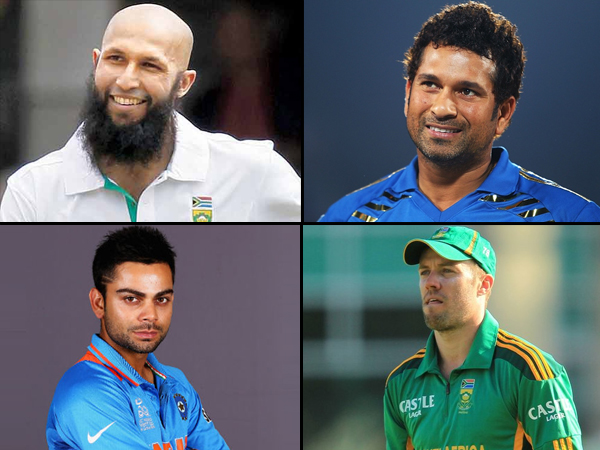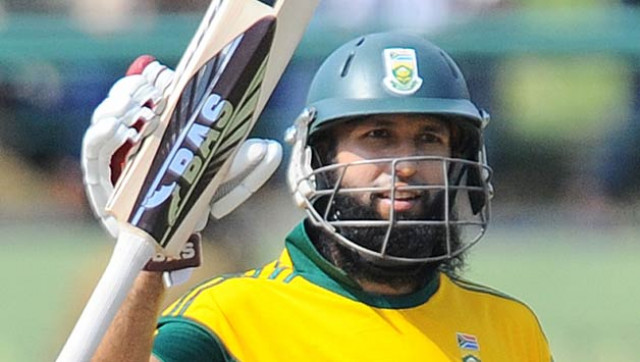After the departure of an extremely talented opener-cum-captain Graeme Smith and a majestic middle-order batsman Jacques Kallis, Amla became the team’s ‘rock’ – as AB de Villiers puts it. A symbol of perseverance and resolute on which team South Africa relied on to take the opening spot. He yielded the willow like a weapon with which he ripped apart bowling attacks with neat wrist work and classy leg glances.
 South Africa's Hashim Amla hits a boundary during the Cricket World Cup match against Ireland at Manuka Oval in Canberra March 3, 2015. Photo: Reuters
South Africa's Hashim Amla hits a boundary during the Cricket World Cup match against Ireland at Manuka Oval in Canberra March 3, 2015. Photo: ReutersIt was this craftsmanship that led him to score the fastest 20 ODI centuries when his side faced giant-slayers Ireland in the Pool B match of the 2015 World Cup on Tuesday.
And those twenty are not merely centuries; they are statements that earmark his placement among the game’s greats like Sir Don Bradman and Sachin Tendulkar.
In the list of the willow-wilders who are the fastest to 20 tons in the 50-over format, Virat Kohli now follows on the second spot with his record 20th ton coming up in 133 ODIs; a record de Villiers took 175 ODIs to make and the great Tendulkar took 197 matches to reach.
 Top: Hashim Amla (L) and Sachin Tendulkar. Bottom: Virat Kohli (L) and AB de Villiers
Top: Hashim Amla (L) and Sachin Tendulkar. Bottom: Virat Kohli (L) and AB de VilliersBut what is the contrasting factor that led Amla to overtake Kohli’s record – a modern day cricketer whose aggression and compassion speaks louder than anything on the field?
Both batsmen have captained their teams in the U19 World Cup (Amla in 2002, Kohli in 2008), debuted in ODIs in 2008 (Amla on March 9 against Bangladesh, Kohli on August 8 against Sri Lanka), average above 50 (Amla 56.2, Kohli 52.17), both have highest scores of 150+ (Amla 159, Kohli 183).
Not much difference right?
But here comes the notion which made Amla better the record which Kohli held for less than a year – his temperament. Meanwhile, Kohli blasts off to centuries with strike rate of 100+ in as many as 16 centuries out of the total 22 in ODIs, Amla has scored only nine out of the total 20 centuries with strike rate of over 100.
 Hashim Amla (L) and Virat Kohli
Hashim Amla (L) and Virat KohliThis does not mean that Kohli lacks the class to become a great player or Amla is meant to be a great Test batsman, but it reflects that the ideal grit required to play longer innings and face the music from bowlers in different cricketing arenas is better suited to the technique that Amla intrinsically garners.
The 31-year-old batting maestro has a lot to look forward to as he leads the Proteas Test side and after scoring the fastest 2,000, 3,000, 4,000 and 5,000 runs in ODIs, the record for the fastest 20 ODI centuries is another medal on his chest which does not bear the Castle Lager logo due to his religious discretion.
England’s great Geoffrey Boycott summarised his impervious technique in a very simple way,
“He (Amla) bats in a way that gives very little hope for the bowlers”
And,
“He plays the same way at the start of his innings as he does at the end of it.”


COMMENTS
Comments are moderated and generally will be posted if they are on-topic and not abusive.
For more information, please see our Comments FAQ